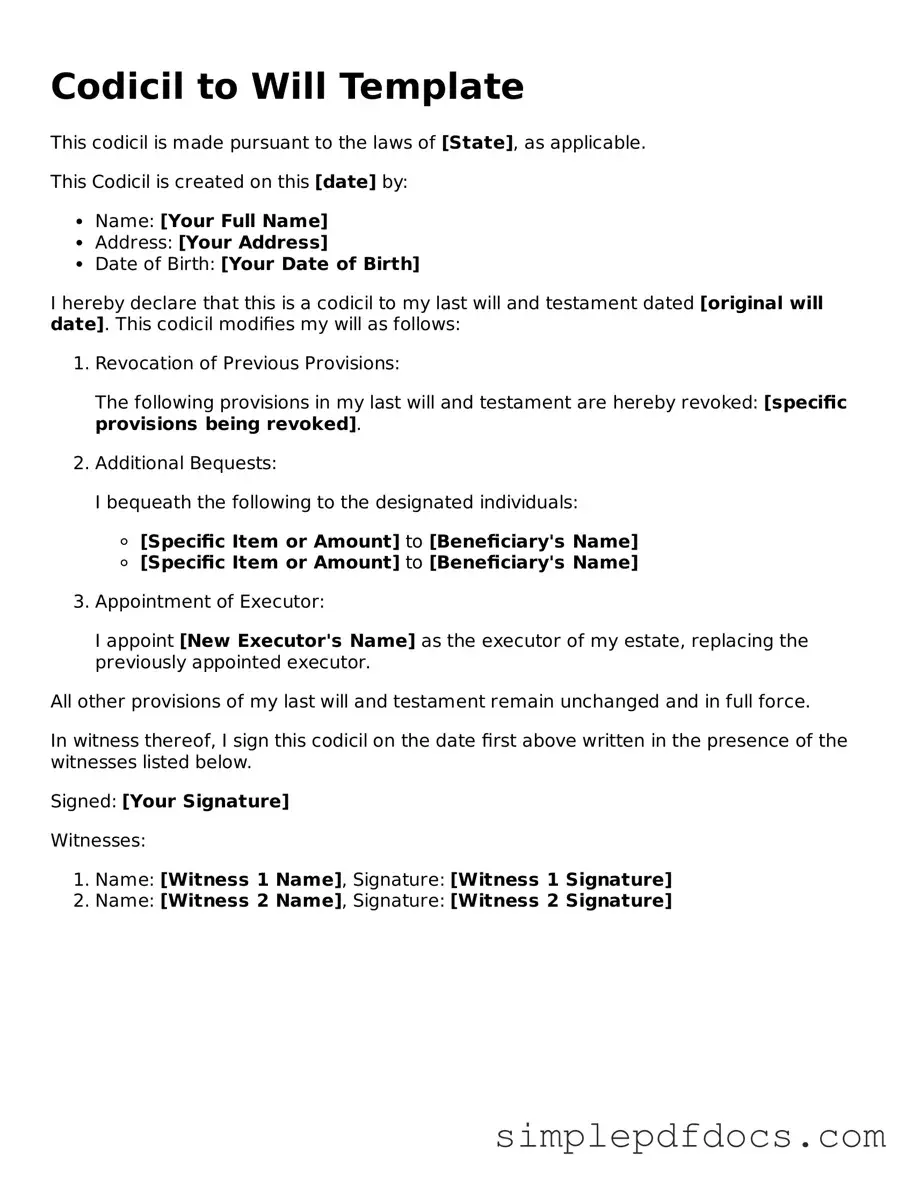Attorney-Approved Codicil to Will Form
A Codicil to Will is a legal document that allows you to make changes or additions to your existing will without having to rewrite the entire document. This form can clarify your intentions, update beneficiaries, or modify specific provisions. Understanding how to properly use a codicil can help ensure your wishes are accurately reflected in your estate plan.
Get Document Here
